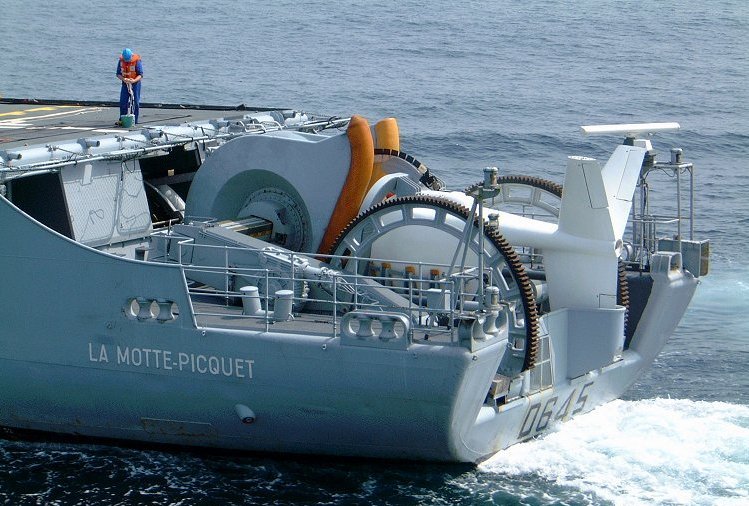|
Signaling
A signal is both the process and the result of transmission of data over some media accomplished by embedding some variation. Signals are important in multiple subject fields including signal processing, information theory and biology. In signal processing, a signal is a function that conveys information about a phenomenon. Any quantity that can vary over space or time can be used as a signal to share messages between observers. The '' IEEE Transactions on Signal Processing'' includes audio, video, speech, image, sonar, and radar as examples of signals. A signal may also be defined as observable change in a quantity over space or time (a time series), even if it does not carry information. In nature, signals can be actions done by an organism to alert other organisms, ranging from the release of plant chemicals to warn nearby plants of a predator, to sounds or motions made by animals to alert other animals of food. Signaling occurs in all organisms even at cellular ... [...More Info...] [...Related Items...] OR: [Wikipedia] [Google] [Baidu] |
Cell Signaling
In biology, cell signaling (cell signalling in British English) is the Biological process, process by which a Cell (biology), cell interacts with itself, other cells, and the environment. Cell signaling is a fundamental property of all Cell (biology), cellular life in both prokaryotes and eukaryotes. Typically, the signaling process involves three components: the signal, the receptor, and the effector. In biology, signals are mostly chemical in nature, but can also be physical cues such as pressure, Membrane potential, voltage, temperature, or light. Chemical signals are molecules with the ability to bind and activate a specific Receptor (biochemistry), receptor. These molecules, also referred to as Ligand (biochemistry), ligands, are chemically diverse, including ions (e.g. Na+, K+, Ca2+, etc.), lipids (e.g. steroid, prostaglandin), peptides (e.g. insulin, ACTH), carbohydrates, glycosylated proteins (proteoglycans), nucleic acids, etc. Peptide and lipid ligands are particularly ... [...More Info...] [...Related Items...] OR: [Wikipedia] [Google] [Baidu] |
Biology
Biology is the scientific study of life and living organisms. It is a broad natural science that encompasses a wide range of fields and unifying principles that explain the structure, function, growth, History of life, origin, evolution, and distribution of life. Central to biology are five fundamental themes: the cell (biology), cell as the basic unit of life, genes and heredity as the basis of inheritance, evolution as the driver of biological diversity, energy transformation for sustaining life processes, and the maintenance of internal stability (homeostasis). Biology examines life across multiple biological organisation, levels of organization, from molecules and cells to organisms, populations, and ecosystems. Subdisciplines include molecular biology, physiology, ecology, evolutionary biology, developmental biology, and systematics, among others. Each of these fields applies a range of methods to investigate biological phenomena, including scientific method, observation, ... [...More Info...] [...Related Items...] OR: [Wikipedia] [Google] [Baidu] |
Signaling Theory
Within evolutionary biology, signalling theory is a body of theory, theoretical work examining animal communication, communication between individuals, both within species and across species. The central question is how organisms with conflicting interests, such as in sexual selection, are expected to provide honest signals rather than deceive or Cheating (biology), cheat, given that the passing on of Pleiotropy, pleiotropic traits is subject to natural selection, which aims to minimize associated costs without assuming any conscious intent. Mathematical models describe how signalling can contribute to an evolutionarily stable strategy. Signals are given in contexts such as mate selection by females, which subjects the advertising in biology, advertising males' signals to selective pressure. Signals thus evolve because they modify the behaviour of the receiver to benefit the signaller. Signals may be honest, conveying information which usefully increases the fitness of the rece ... [...More Info...] [...Related Items...] OR: [Wikipedia] [Google] [Baidu] |
Sonar
Sonar (sound navigation and ranging or sonic navigation and ranging) is a technique that uses sound propagation (usually underwater, as in submarine navigation) to navigate, measure distances ( ranging), communicate with or detect objects on or under the surface of the water, such as other vessels. "Sonar" can refer to one of two types of technology: ''passive'' sonar means listening for the sound made by vessels; ''active'' sonar means emitting pulses of sounds and listening for echoes. Sonar may be used as a means of acoustic location and of measurement of the echo characteristics of "targets" in the water. Acoustic location in air was used before the introduction of radar. Sonar may also be used for robot navigation, and sodar (an upward-looking in-air sonar) is used for atmospheric investigations. The term ''sonar'' is also used for the equipment used to generate and receive the sound. The acoustic frequencies used in sonar systems vary from very low ( infrasonic) to e ... [...More Info...] [...Related Items...] OR: [Wikipedia] [Google] [Baidu] |
Signal Integrity
Signal integrity or SI is a set of measures of the quality of an electrical signal. In digital electronics, a stream of binary values is represented by a voltage (or current) waveform. However, digital signals are fundamentally analog signal, analog in nature, and all signals are subject to effects such as electrical noise, noise, distortion, and loss. Over short distances and at low bit rates, a simple conductor can transmit this with sufficient fidelity. At high bit rates and over longer distances or through various mediums, various effects can degrade the electrical signal to the point where errors occur and the system or device fails. Signal integrity engineering is the task of analyzing and mitigating these effects. It is an important activity at all levels of electronics packaging and assembly, from internal connections of an integrated circuit (IC), A survey of the field of electronic design automation. Portions of IC section of this article were derived (with permission) fro ... [...More Info...] [...Related Items...] OR: [Wikipedia] [Google] [Baidu] |
Audio Signal
An audio signal is a representation of sound, typically using either a changing level of electrical voltage for analog signals or a series of binary numbers for Digital signal (signal processing), digital signals. Audio signals have frequencies in the audio frequency range of roughly 20 to 20,000 Hz, which corresponds to the lower and upper Human hearing range, limits of human hearing. Audio signals may be Synthesizer, synthesized directly, or may originate at a transducer such as a microphone, Pickup (music technology), musical instrument pickup, phonograph cartridge, or tape head. Loudspeakers or headphones convert an electrical audio signal back into sound. Digital audio systems represent audio signals in a variety of digital formats.Hodgson, Jay (2010). ''Understanding Records'', p.1. . An audio channel or audio track is an audio signal communications channel in a data storage device, storage device or mixing console. It is used in operations such as multi-track recordi ... [...More Info...] [...Related Items...] OR: [Wikipedia] [Google] [Baidu] |
Data Transmission
Data communication, including data transmission and data reception, is the transfer of data, signal transmission, transmitted and received over a Point-to-point (telecommunications), point-to-point or point-to-multipoint communication channel. Examples of such channels are copper wires, optical fibers, wireless communication using radio spectrum, storage media and computer buses. The data are represented as an electromagnetic signal, such as an electrical voltage, radiowave, microwave, or infrared signal. ''Analog transmission'' is a method of conveying voice, data, image, signal or video information using a continuous signal that varies in amplitude, phase, or some other property in proportion to that of a variable. The messages are either represented by a sequence of pulses by means of a line code (''baseband transmission''), or by a limited set of continuously varying waveforms (''passband transmission''), using a digital modulation method. The passband modulation and cor ... [...More Info...] [...Related Items...] OR: [Wikipedia] [Google] [Baidu] |
Transmission Media
A transmission medium is a system or substance that can mediate the propagation of signals for the purposes of telecommunication. Signals are typically imposed on a wave of some kind suitable for the chosen medium. For example, data can modulate sound, and a transmission medium for sounds may be air, but solids and liquids may also act as the transmission medium. Vacuum or air constitutes a good transmission medium for electromagnetic waves such as light and radio waves. While a material substance is not required for electromagnetic waves to propagate, such waves are usually affected by the transmission medium they pass through, for instance, by absorption or reflection or refraction at the interfaces between media. Technical devices can therefore be employed to transmit or guide waves. Thus, an optical fiber or a copper cable is used as transmission media. Electromagnetic radiation can be transmitted through an optical medium, such as optical fiber, or through twisted pair ... [...More Info...] [...Related Items...] OR: [Wikipedia] [Google] [Baidu] |
IEEE Transactions On Signal Processing
The ''IEEE Transactions on Signal Processing'' is a biweekly peer-reviewed scientific journal published by the Institute of Electrical and Electronics Engineers covering research on signal processing. It was established in 1953 as the ''IRE Transactions on Audio'', renamed to ''IEEE Transactions on Audio and Electroacoustics'' in 1966 and to ''IEEE Transactions on Acoustics, Speech, and Signal Processing'' in 1974, before obtaining its current name in 1992. The journal is abstracted and indexed in MEDLINE/PubMed and the Science Citation Index Expanded. According to the ''Journal Citation Reports'', the journal has a 2022 impact factor of 5.4. The editor-in-chief is Wing-Kin (Ken) Ma (Chinese University of Hong Kong The Chinese University of Hong Kong (CUHK) is a public university, public research university in Sha Tin, New Territories, Hong Kong. Established in 1963 as a federation of three university college, collegesChung Chi College, New Asia Coll ...). See also *'' IEE ... [...More Info...] [...Related Items...] OR: [Wikipedia] [Google] [Baidu] |
Microphone
A microphone, colloquially called a mic (), or mike, is a transducer that converts sound into an electrical signal. Microphones are used in many applications such as telephones, hearing aids, public address systems for concert halls and public events, motion picture production, live and recorded audio engineering, sound recording, two-way radios, megaphones, and radio and television broadcasting. They are also used in computers and other electronic devices, such as mobile phones, for recording sounds, speech recognition, Voice over IP, VoIP, and other purposes, such as Ultrasonic transducer, ultrasonic sensors or knock sensors. Several types of microphone are used today, which employ different methods to convert the air pressure variations of a sound wave to an electrical signal. The most common are the dynamic microphone, which uses a coil of wire suspended in a magnetic field; the condenser microphone, which uses the vibrating Diaphragm (acoustics), diaphragm as a capacitor ... [...More Info...] [...Related Items...] OR: [Wikipedia] [Google] [Baidu] |
Estimation Theory
Estimation theory is a branch of statistics that deals with estimating the values of Statistical parameter, parameters based on measured empirical data that has a random component. The parameters describe an underlying physical setting in such a way that their value affects the distribution of the measured data. An ''estimator'' attempts to approximate the unknown parameters using the measurements. In estimation theory, two approaches are generally considered: * The probabilistic approach (described in this article) assumes that the measured data is random with probability distribution dependent on the parameters of interest * The set estimation, set-membership approach assumes that the measured data vector belongs to a set which depends on the parameter vector. Examples For example, it is desired to estimate the proportion of a population of voters who will vote for a particular candidate. That proportion is the parameter sought; the estimate is based on a small random sa ... [...More Info...] [...Related Items...] OR: [Wikipedia] [Google] [Baidu] |







